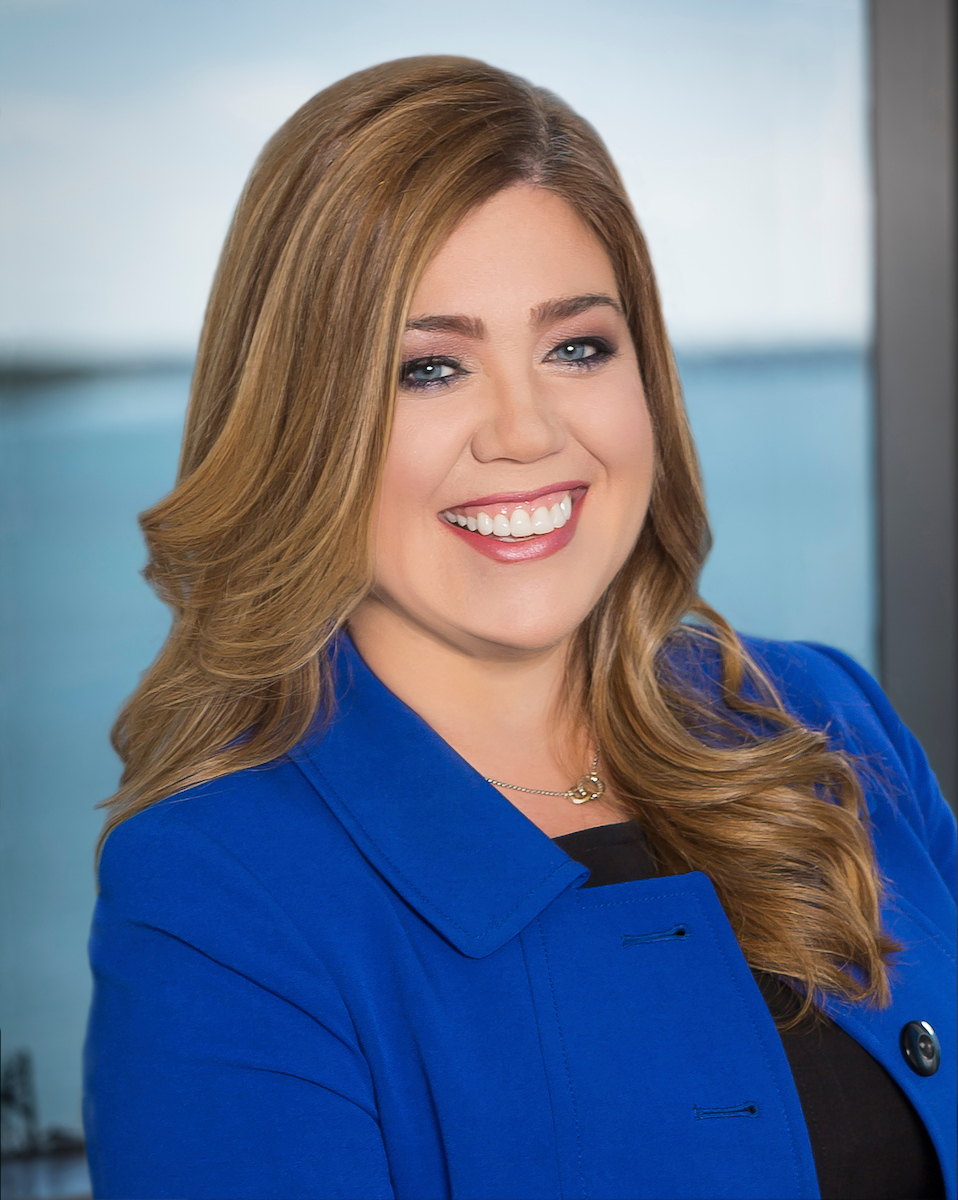Asset recovery column: Globalisation catches up with the US insolvency courts
/0 Comentários/em News Release /por Jacques HartShareholder Leyza B. Florin and attorney Christopher Noel from Sequor Law in Miami discuss recent developments in coordination and communication between courts handling cross-border insolvencies.
In today’s ever-globalized world, courts are progressively recognizing the need for cross-border coordination and cooperation when dealing with insolvency matters. Earlier this summer, the US Bankruptcy Court for the District of Delaware adopted the Judicial Insolvency Network’s (JIN) Modalities of Court-to-Court Communication (the Modalities). The Delaware court’s adoption of the Modalities followed its February 2017 promulgation of Part X: Guidelines for Communication and Cooperation Between Courts in Cross-Border Insolvency Matters (the Guidelines).
The Guidelines and Modalities represent an unprecedented attempt at creating a unified framework for coordination and cooperation, and in some cases, joint hearings. In the past, coordination and cooperation among US bankruptcy judges and courts abroad was based on section 1525 of the US Bankruptcy Code (Cooperation and direct communication between the court and foreign courts or foreign representatives), and it was accomplished on an ad hoc basis, which was ultimately left up to the specific judges handling the cross-border insolvency matter. This article examines the lead-up to the District of Delaware’s adoption of the Modalities, the Modalities’ goals in facilitating cross-border communication in insolvency matters, and forecasts the implications of the Modalities upon – and assuming – their addition to the District of Delaware Local Rules of Civil Practice and Procedure.
The beginnings of global cooperation
The District of Delaware and the Supreme Court of Singapore announced the formal implementation of the Guidelines on 1 February 2017. The Guidelines are the result of work by judges around the world – judges in Australia, Bermuda, the British Virgin Islands, Canada, the Cayman Islands, England and Wales, Singapore, and the United States all contributed to their development beginning at the 2016 JIN meeting in Singapore. To date, they have been adopted by some of the busiest bankruptcy and insolvency tribunals around the world (see list at foot of article).
The goal of adopting the Guidelines was “to improve in the interests of all stakeholders the efficiency and effectiveness of cross-border proceedings relating to insolvency or adjustment of debt opened in more than one jurisdiction by enhancing coordination and cooperation amongst courts”. Ultimately, the Guidelines are meant to benefit all stakeholders in cross-border insolvencies, by improving efficiency in the insolvency process and reducing litigation costs. The Guidelines comprise an introduction setting forth objectives, 14 enumerated guidelines providing guidance on protocols, and an appendix addressing joint hearings.
Delaware moves the ball
On 25 July 2019, the JIN announced its adoption of the Modalities. On the same day, Judge Christopher Sontchi, chief judge of the US Bankruptcy Court for the District of Delaware, entered an order adopting the Modalities on an interim basis, pending the District Court’s annual review of its Local Rules. This means the District of Delaware will now follow the Modalities when dealing with cross-border insolvency matters, even before they are formally adopted into the Local Rules. The Modalities include guidance concerning the designation of a so-called facilitator, the initiation of communications between judges, arrangements for those communications, and the actual communications between judges. Each of these areas of guidance will be discussed below.
Laying the groundwork
The Modalities apply to all direct communications between courts in cross-border insolvency proceedings. They also govern the mechanics of communication between courts in parallel proceedings, such as a Chapter 15 proceeding in the US where there is a simultaneous foreign main proceeding abroad. In general, the Modalities anticipate that a judge in a matter with cross-border elements (the initiating judge) will attempt to communicate with other judges and courts considering the same insolvency matter (the receiving judge).
To accomplish this objective, courts are now requested to publish information regarding facilitators so that there is a clear line of communication. Among the information in the facilitator, publication will be the facilitator’s identity (the District of Delaware has identified its clerk of court to act in this role) and the language for the initial communication, as well as what technology is available to facilitate communication. This basic information was not necessarily easily obtained in the past, and a clear designation of with whom to communicate and how those communications should be made, will alone facilitate greater coordination and cooperation among those involved in cross-border insolvencies.
Saying hello
Once the groundwork for communication is established, and there is a clear line of communication with a court’s facilitator, the judges involved in parallel cross-border insolvency proceedings should exchange relevant information to keep the line of communication open. The initiating judge should provide basic information to the receiving judge, such as the facilitator’s contact information, the initiating judge’s contact information, information concerning the matter before the initiating judge, the nature of the matter, whether the parties before the initiating judge have consented to the communication, and the specific issues upon which communication is sought. Once this initial communication is accomplished, then the facilitator should step in and assist with coordinating between the initiating and the receiving judges.
Setting a date
After a line of communication is open, the initiating and receiving judges’ facilitators are free to communicate and arrange for the two judges to speak, with or without the presence of counsel or the parties. The initiating and receiving judges have great leeway in how communication is made, and the Modalities provide only that the two judges should be satisfied with the arrangements, including appropriate translation services and protocols to communicate confidential information via a secure method.
The first meeting and ongoing discussions.
After the necessary protocols are in place, the Modalities suggest that the initiating and receiving judges communicate in accordance with the Guidelines. Additionally, the Modalities provide that, should the two judges so wish, they may discontinue the use of their respective facilitators to allow for an efficient line of direct communication. This may also be done without the presence of counsel or the parties. Ultimately, the Modalities’ goal is to allow easy, efficient, and productive communication between the initiating and receiving judges so as to improve efficiency.
A globalized world
Now that the District of Delaware has, at least initially, adopted the Modalities, it is foreseeable that other US Bankruptcy courts will follow suit. The number of cross-border insolvency proceedings that could (and will) benefit from increased coordination and cooperation across borders is ever growing. All parties – creditors, debtors, bankruptcy estates, and insolvency tribunals – stand to benefit from the Modalities when handling cross-border insolvencies.
Moving forward, the potential impact on cross-border insolvency practice is great. Both insolvency courts and practitioners alike will need to work together to implement the Modalities and Guidelines so that all involved are familiar and comfortable working with this new framework. Additionally, through ongoing efforts, cross-border insolvency matters should become more streamlined and efficient. The free flow of information will take much of the uncertainty out of cross-border situations where multiple parallel proceedings are involved. In sum, the Modalities and Guidelines now facilitate the insolvency practice’s ongoing evolution in an ever-more-globalised world.
Courts Adopting the Guidelines for Communication and Cooperation Between Courts in Cross-Border Insolvency Matters
- The US Bankruptcy Court for the District of Delaware
- The Supreme Court of Singapore
- The US Bankruptcy Court for the Southern District of New York
- The Supreme Court of Bermuda
- The Chancery Division of England & Wales
- The Eastern Caribbean Supreme Court
- The Supreme Court of New South Wales
- The US Bankruptcy Court for the Southern District of Florida
- The Seoul Bankruptcy Court
- The Grand Court of the Cayman Islands
- The Commercial List Users’ Committee of the Superior Court of Justice – Ontario (Commercial List)
- The District Court Midden-Nederland, in the Netherlands
To view the original article, click here.
Lawyers Advisory Committee
/0 Comentários/em News Release /por Jacques Hart By: Guest Contributor Leyza B. Florin, Chair Lawyers Advisory Committee
By: Guest Contributor Leyza B. Florin, Chair Lawyers Advisory Committee
The Lawyers Advisory Committee (LAC) for the Southern District of Florida Bankruptcy Court was formed in 2018 to provide a forum for communication, feedback, and resources between the judges and the bar. Its purpose includes regularly soliciting the bar for commentary regarding bankruptcy practice and receiving requests from the court to consider issues arising from the practice of law before the Court.
The LAC may recommend changes in the practice and procedures throughout the district and also acts as a liaison between the Court and the practitioners. In addition, the LAC is charged with the development, implementation, and maintenance of bankruptcy-related programs in the district as requested by the Court. To view samples of issues addressed by the LAC, please visit the LAC web page to view meeting minutes.
The LAC is only as successful as the bankruptcy bar makes it. We are dependent on you to contact LAC members with any concerns or suggestions that you might have about bankruptcy practice in our district. The success of our bankruptcy practice in the Southern District of Florida is our absolute priority. If you have any recommendations which will improve the Court’s administration of justice, please reach out to a member of the LAC or contact us at LAC@flsb.uscourts.gov. We encourage you to participate by submitting feedback for consideration and assist the LAC in making our bankruptcy practice in the Southern District of Florida the best it can be.
BANKRUPTCY RULES AND FORMS ARE AMENDED EFFECTIVE 12/1/19
Amendments to the federal rules and forms scheduled to take effect 12/1/19 and can be reviewed at the U.S. Courts website at these links:
Pending Rules and Forms Amendments
Pending Changes in Bankruptcy Forms
If any of the above amendments necessitate changes in this court’s local rules, local forms, court guidelines, clerk’s instructions or any other local documents, notice will be provided prior to the December 1, 2019, effective date of the bankruptcy rules and forms amendments.
COURT GUIDELINES FOR ATTORNEYS FOR CHAPTER 13 DEBTORS AMENDED
Please take notice that the “Guidelines for Compensation for Professional Services or Reimbursement of Expenses by Attorneys for Chapter 13 Debtors Pursuant to Local Rule 2016-1(B)(2)(a)” have been amended to reflect an increase in the compensation fee that an attorney may charge without application to the court.
The “no-look” fee will increase from $3,500 to $4,500 for all cases filed under or converted to chapter 13 on or after September 1, 2019. A Public Notice and amended “Guidelines” are currently posted on the court website.
PROPOSED AMENDMENT TO THE FEDERAL RULES PUBLIC COMMENT PERIOD CLOSES FEBRUARY 19, 2020
On August 19, 2019, the Judicial Conference Advisory Committees on Appellate, Bankruptcy, and Civil Rules published proposed amendments to their respective rules and forms and requested that the proposals be circulated to the bar and public for comment.
Appellate Rules: 3, 6, 42, and Forms 1 and 2; Bankruptcy Rules: 2005, 3007, 7007.1, and 9036; Civil Rule: 7.1
The proposed amendments, rules committee reports explaining the proposed changes, and instructions on how to submit comments are posted on the U.S. Courts website at:
Proposed Amendments Published Comments
The public comment period closes on February 19, 2020. If approved, the amendments would become effective December 1, 2021.
Thought Leaders Global Elite – Asset Recovery (GIR 2019)
/0 Comentários/em News Release /por Jacques HartWho’s Who Legal says: Edward Davis Jr is one of the foremost lawyers in our research this year. Sources note, “He is particularly strong at identifying key issues and strategizing in ways that take those key issues into consideration.”
Sequor Law

SOBRE NÓS
O Sequor Law é um escritório de advocacia internacional, representando instituições financeiras, governos e empresas estatais, companhias de capital aberto e fechado, profissionais da área falimentar e indivíduos nas áreas de recuperação de ativos, fraudes financeiras, insolvência e contencioso relacionado a serviços financeiros.
LINKS RÁPIDOS
ENDEREÇO
MIAMI
1111 Brickell Avenue
Suite 1250
Miami, Florida 33131
WASHINGTON, D.C.
650 Massachusetts Avenue N.W
Suite 600
Washington, D.C. 20001
INFORMAÇÕES DE CONTATO
Telefone: (+1) 305-372-8282
Fax: (+1) 305-372-8202
SIGA-NOS NO:
BOLETIM DE NOTÍCIAS
Cadastra-se para receber notícias da empresa e do setor todos os meses.


